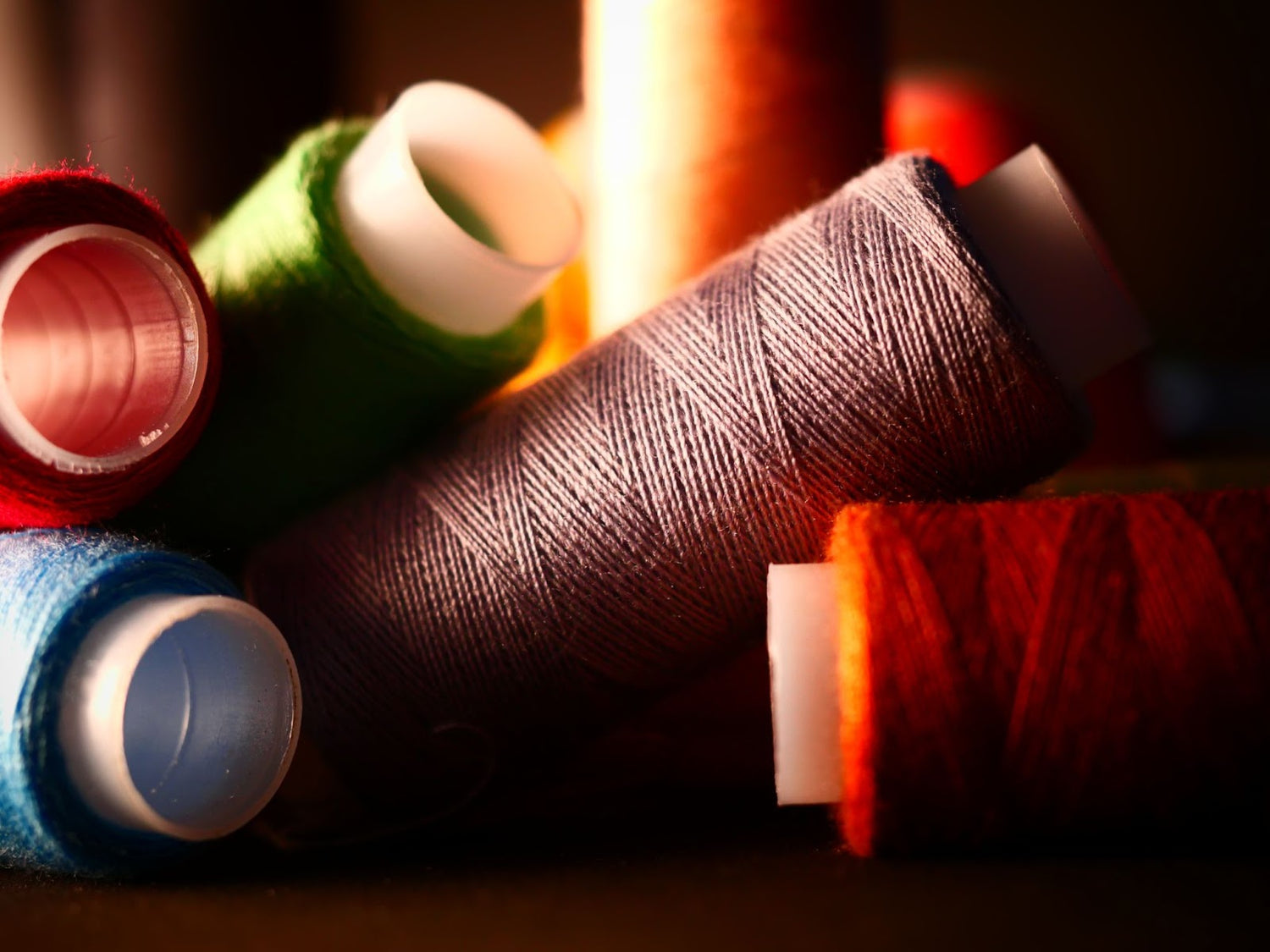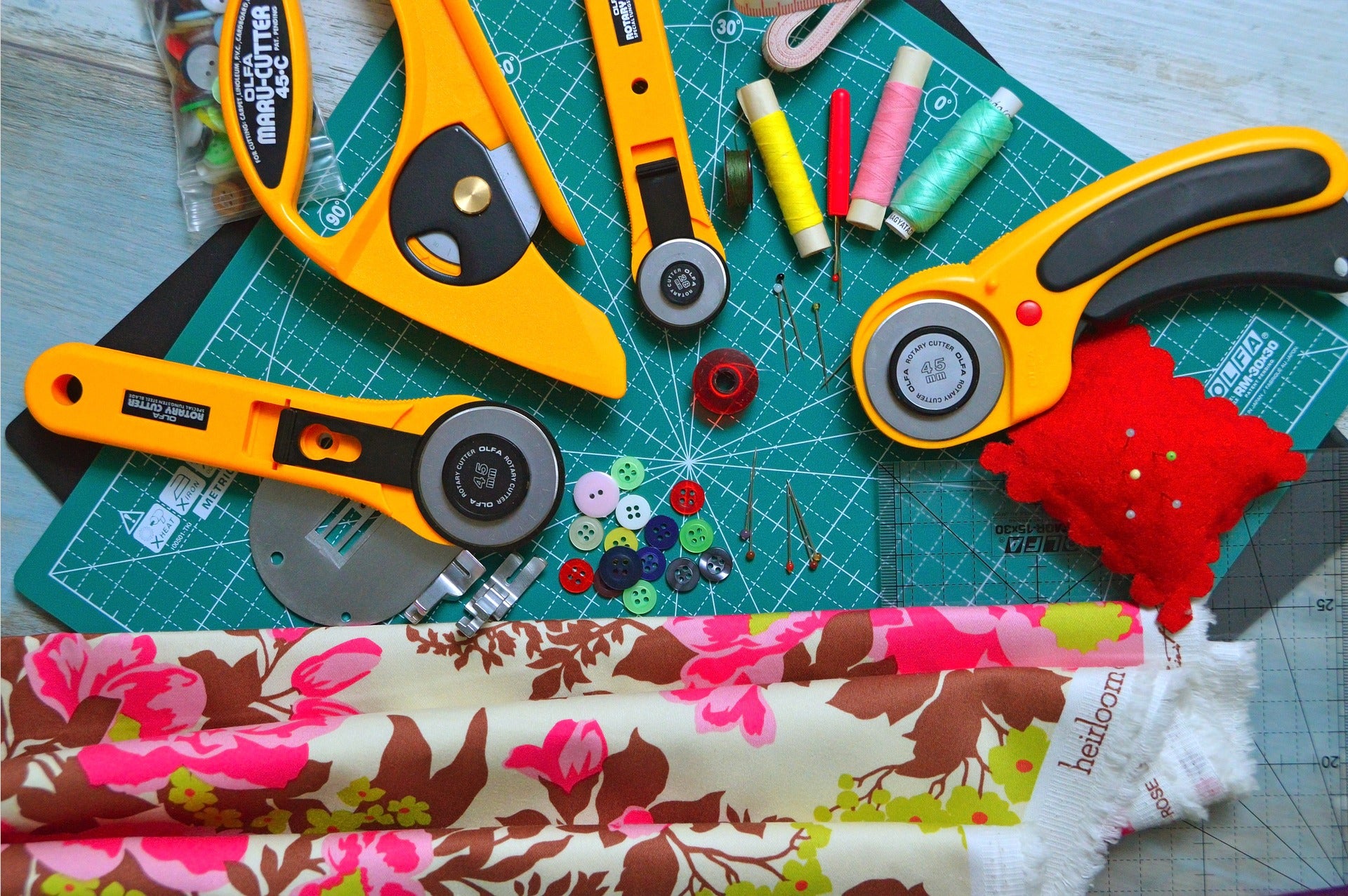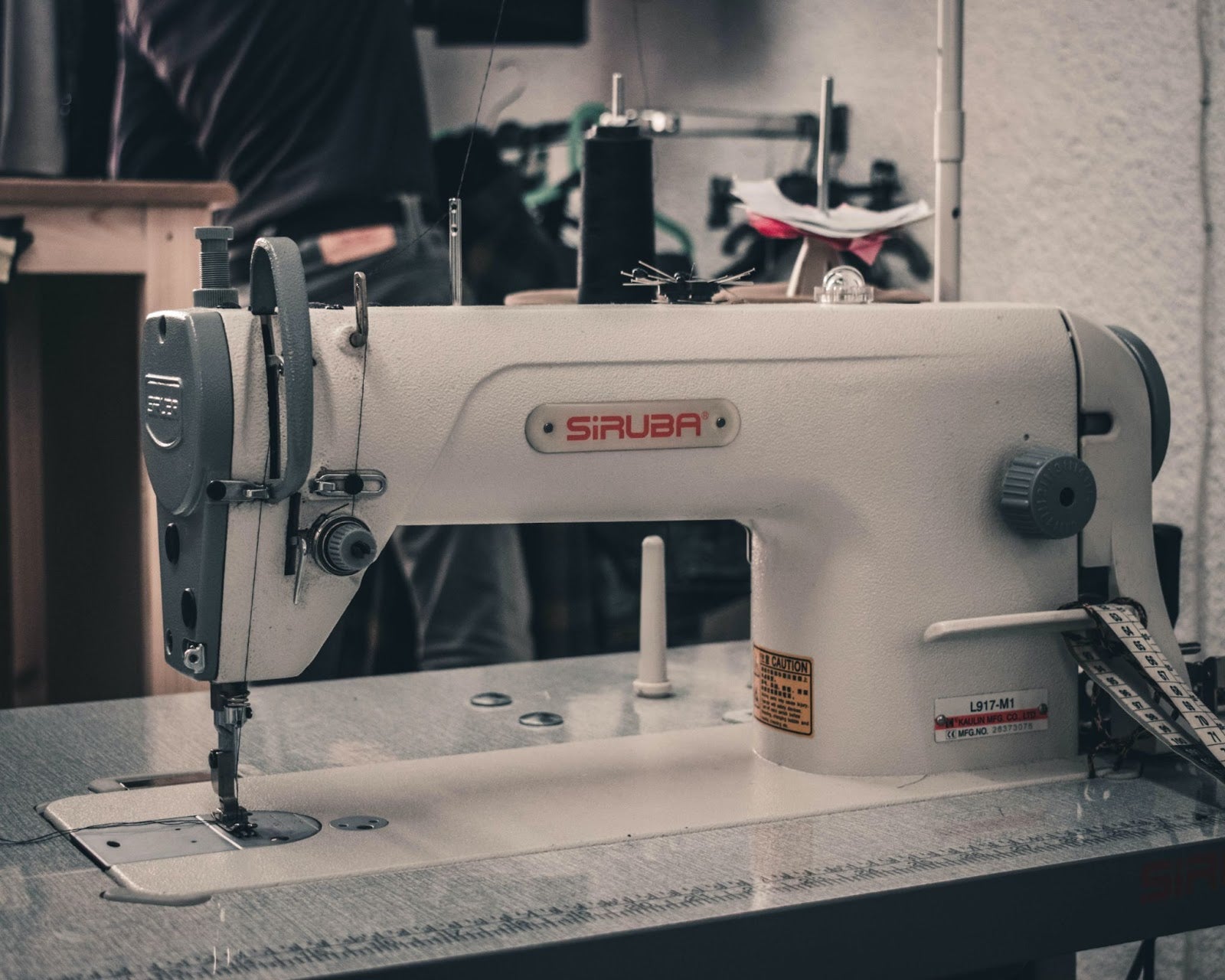If you’ve never sewn with polyester before, you may be nervous about it. Polyester is a notoriously difficult fabric to work with, and even though it is one of the most commonly used synthetics, many people have difficulty working with it. However, sewing with polyester can be done! With a little practice and some of our tips and tricks, you’ll be able to sew polyester garments with no trouble at all.
What Is Polyester?
Polyester is one of the most widely known and used synthetic fabrics there is. Synthetic means that this fabric is not naturally occurring—it’s man-made. Examples of natural fabrics include cotton, silk, and wool, while examples of synthetic fabrics include spandex, rayon, and of course, polyester.
Polyester fabric, also known as polyethylene terephthalate, is a synthetic woven fabric known for being extremely durable and affordable, hence why so many clothing companies choose to use it. Polyester was invented in 1941 by British chemists, and U.S. company Dupont brought it to the United States. Polyester became very popular in the 1970s as an inexpensive material used to make suits and other clothing items. Today, polyester, and polyester blends, are the most popular human-made fabric in the world.
Polyester is made from the polymerization of petroleum-derived ethylene glycol and purified terephthalic acid, which melt down to produce polyethylene terephthalate, or PET. The molten PET is then processed and turned into fibers, which are then sometimes chemically treated before being woven into fabric.
Polyester is a great material for making clothing, as it’s cheap, durable, moisture-resistant, and retains its shape over time. However, it can sometimes be difficult to work with, especially if you're a beginner seamstress. But don’t let polyester intimidate you! Once you have a little practice and the correct tools, you can make gorgeous garments out of polyester with ease.
Tips For Stitching Polyester
Polyester is always going to be difficult to work with, but there are a few things you can do to make it easier.
- Wash Before Use: This is a big one. Before you begin sewing with polyester, wash it in cold water, and dry on low heat. Since polyester is made from chemicals and not naturally occurring, you want to make sure you wash away any excess colorant or coatings on the fabric that may make sewing more difficult. This can also help to protect against allergic reactions caused by polyester.
- Always Use A Fresh Needle: Whether you’re sewing by hand or on a machine, always make sure you swap out your needle for a new one before you begin to sew. Polyester is made up of small fibers that can snag and tear easily. Using a fresh needle helps to avoid damaging your fabric as much as possible. In general, polyester tends to respond better to small needles, as larger needles tend to cause holes in the fabric.
- Use Polyester Thread: In general, when selecting a thread for sewing, you want to choose one that matches the elasticity of the fabric as much as possible. For polyester fabric, you can’t get closer than polyester thread. When using polyester thread on a sewing machine, make sure to wind your bobbin slowly, and sew at a slow, even pace. Feeding your thread too quickly can generate friction and heat, which can cause polyester thread to stretch.
- Iron Before Sewing: This is important for every fabric, but especially polyester. Make sure you’re pressing out your fabric with an iron set to a synthetic setting. Sometimes polyester creases simply can’t be removed with an iron, so you need to just cut them away and use the rest of the fabric section.
How To Sew Polyester On A Sewing Machine
Whether you’re new to sewing or you’ve been sewing for years, you’ll have to adjust your usual methods when it comes to sewing polyester. Our biggest tip is to really commit to learning how a sewing machine works. This will help you get a better grasp of what the different settings actually do and make all your sewing projects go much more smoothly.
Machine Settings
When it comes to recommended stitch settings, it’s best to use a stitch length of between 0.5 mm (0.02 inches) and 1.5 mm (0.059 inches). Additionally, you’ll need to adjust your sewing machine’s foot pressure. If you aren’t sure how to do this, consult your manual. Too much pressure will cause your fabric to pull, which can result in puckering. Sew slowly, and stay in control. If you need help sewing in a straight line when going slowly, you can use a quilting ruler as a straight edge.
Tension settings are another factor to think about when sewing polyester. Most new sewing machines will have an automatic polyester setting, which usually works just fine to accommodate any type of polyester. If your machine doesn’t have automatic tension settings, the upper tension will usually sit around a 4. If you need to, you can test your tension by sewing a few stitches on some scrap fabric.
Needle choice is also important when machine sewing with polyester. We recommend 70/10-80/12 ballpoints, sharps, and stretch needles, depending on your polyester’s weight, blend, and fabric structure. If you’re using a loosely woven polyester, a ballpoint should be fine. Sharp needles are best for tightly woven fabrics, and stretch needles are great for polyester and spandex blends. The thicker your polyester, the larger the needle you’ll require.
The Fabric
Finally, make sure you’re paying attention to what percentage of your fabric is made from polyester. Some fabrics out there are 100% polyester, but most polyester fabrics are poly blends.
If you’re working with 100% polyester, the most important thing to remember is to use a polyester thread. You want your fabric and your thread to have similar elasticity. Otherwise, the thread won’t match the durability and stretch level of your fabric, which can cause problems like increased wear, popped seams, and more.
If you’re sewing a polyester/spandex blend, it’s best to use a stretch needle to accommodate the increased flexibility of the spandex. Ballpoint needles also work well, as they're less likely to damage the fibers. Washing before sewing is crucial, as spandex tends to shrink the first time you wash it.
How To Hand Sew Polyester
In general, sewing polyester with a sewing machine is the preferred method. However, you can totally sew polyester by hand! It just takes a little bit of practice, patience, and the proper tools. Just like with machine sewing polyester, it’s important to make sure you wash it beforehand, to remove any excess colorant or coating that’s on the fabric.
Remember that polyesters, especially silky ones, are very slippery fabrics. You may run into problems keeping a grip on your fabric, which can, in turn, lead to uneven stitches. You can avoid this problem by spraying your fabric with starch before you sew. However, you should remember to wash your garment before wear to avoid buildup.
As for needles, you’ll want to use a ballpoint hand sewing needle in a size 5-10. The thicker and heavier your fabric, the larger the needle you’ll need. You’ll also want to make sure to use good-quality polyester thread.
When it comes to the actual stitches, we recommend making small, very narrow zig-zag stitches. You want your zig-zags to appear narrow so that they almost make a straight line. Zig-zag stitches will provide a stronger hold and are usually easier to sew evenly.
Sewing Polyester Without Puckering
Puckering is probably the most common issue people run into when sewing polyester, especially satin polyester. Even very experienced seamstresses experience this from time to time. Luckily, there are some ways to help avoid wrinkling and puckering.
- Experiment with your stitching before you begin your project. Buy some extra fabric, and before you start sewing the real thing, practice on some scraps with different needles, threads, and stitches. This way, you’ll know what works best and what causes issues.
- Don’t be tempted to use old needles. Polyester is best sewn with as fine of a needle as possible. Always use a fresh sharp or microtex needle, in about a size 8.
- Use small, narrow zig-zag stitches on the seam.
- Lay the pieces cross-grain rather than lengthwise.
- Make sure the pressure on your sewing machine’s foot is as low as possible.
Conclusion
Sewing polyester can be a struggle for even the most experienced seamstresses. Luckily, there are some tips, tricks, and tools you can use that help make sewing this synthetic fabric a breeze. With a bit of practice, you can make gorgeous polyester garments with no trouble at all.
Here at Love Sew, we’re passionate about all things sewing and quilting, and we sell handy sewing tools and gadgets that can make things go even more smoothly. Visit us online today to join the Love Sew family!
Sources:
Natural vs. Synthetic Fibers: What's the Difference? | Masterclass
Polyester Fabric Guide: Explore the Look and Feel of Polyester | Masterclass
Polyester Allergy: Symptoms, Treatment, and Alternatives | Healthline




11 comments
Carol Newman
Hannah, I couldn’t find a way to respond to your comment but Sewing Pattern Secrets is brilliant for video tutorials. It also has pretty much every project and pattern you can think of. You can find it at: www.SewingHub.info – Polyester can be difficult to sew at first because it’s often a slippery, stretchy fabric. However you will get used to it quickly. Hope this helps.
Hannah
This article was very helpful but I’m more of a visual learner. Do you have any video tutorials? I’m a beginner and I want to try sewing polyester but I was told it’s best to start off with a different fabric.
Konveksi Seragam Kerja
Your website is very inspiring with high-quality content. We are sure that you will find additional useful information on our website. Come on, visit us at Konveksi Seragam Kerja and we can collaborate with each other.
Warm Regard.
Konveksi Seragam Kerja
Your website is very inspiring with high-quality content. We are sure that you will find additional useful information on our website. Come on, visit us at Konveksi Seragam Kerja and we can collaborate with each other.
Warm Regard.
Konveksi Seragam Kerja
Your website is very inspiring with high-quality content. We are sure that you will find additional useful information on our website. Come on, visit us at Konveksi Seragam Kerja and we can collaborate with each other.
Warm Regard.
Leave a comment
This site is protected by hCaptcha and the hCaptcha Privacy Policy and Terms of Service apply.